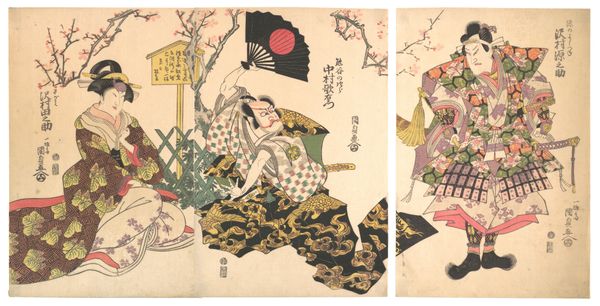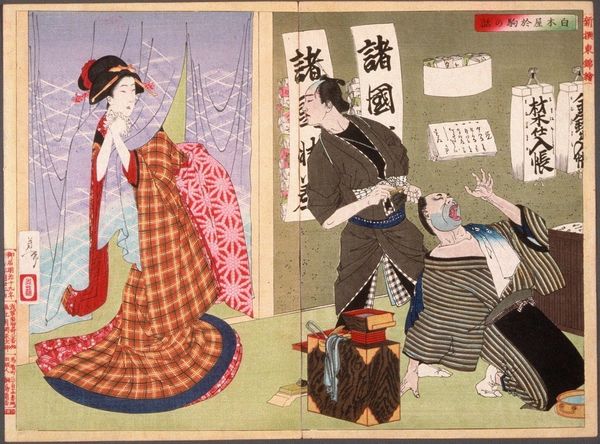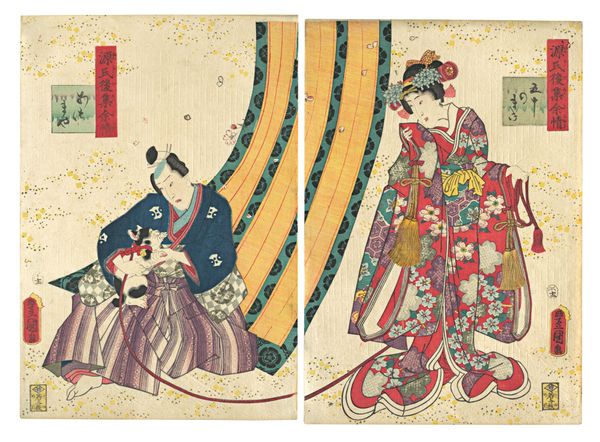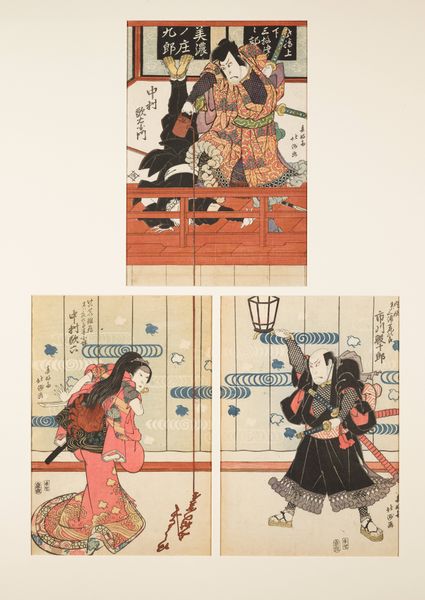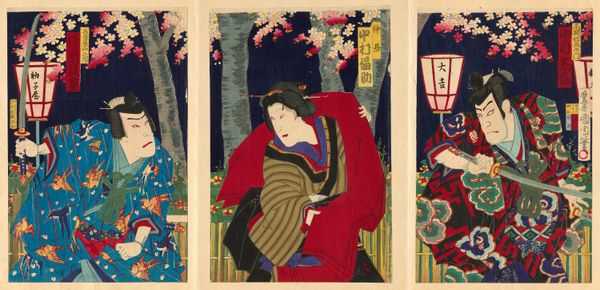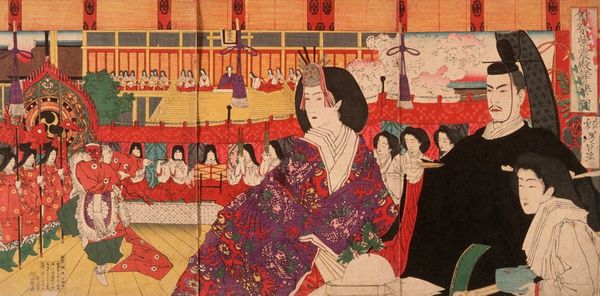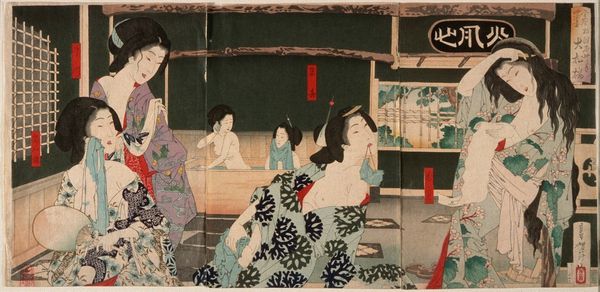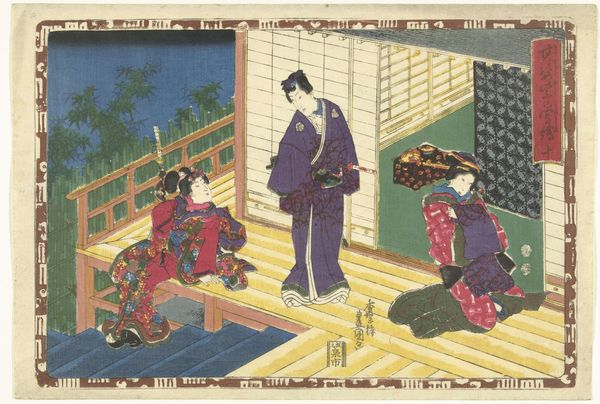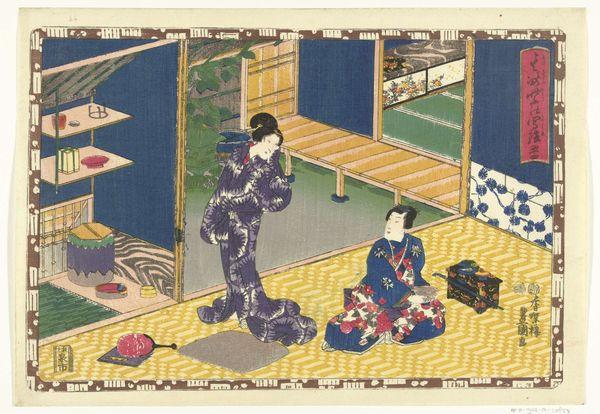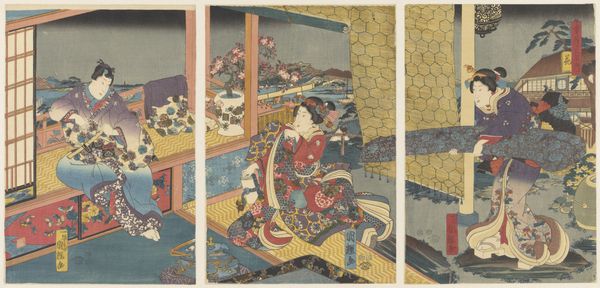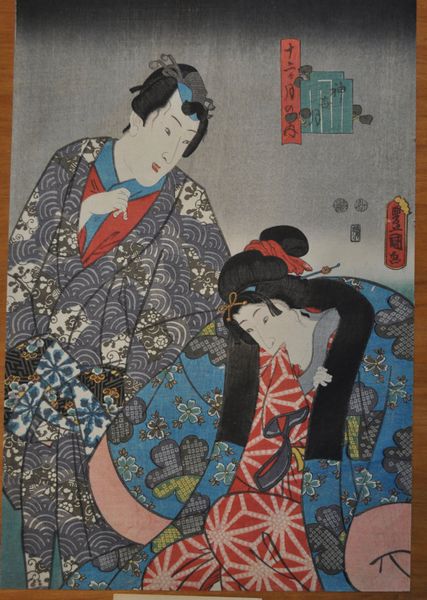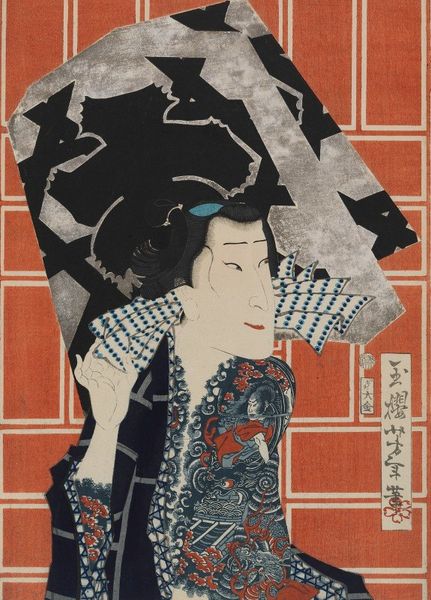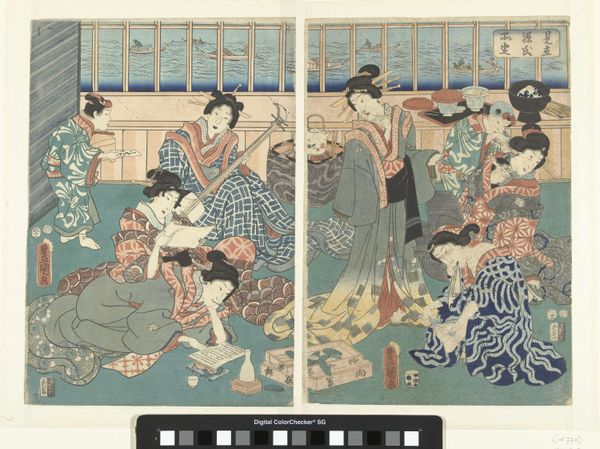
Copyright: Public Domain: Artvee
Editor: So, this is "Lady Ejima and the Actor Ikushima Shingorō," a woodblock print from 1886 by Tsukioka Yoshitoshi. There’s almost a graphic quality to the image. It strikes me how flat the figures feel. What compositional choices stand out to you? Curator: Indeed. Notice how Yoshitoshi employs distinct patterns and linear arrangements to construct the scene. The checkered yukata of Lady Ejima contrasts markedly with the striped kimono of the actor. What does this opposition convey? Editor: Perhaps that contrast represents some kind of social standing between them? Curator: Precisely. Note the intentional use of asymmetry. The female figure dominates the right side, positioned at an oblique angle, whilst the male is seated to the left. This asymmetrical placement, intersected by the architectural screen, directs our gaze, doesn't it? What does it imply in the narrative? Editor: That maybe they’re not on the same level, not quite seeing eye to eye? She's above him, separated. Curator: It's a study in structure, utilizing spatial dynamics and visual elements to generate tension. Yoshitoshi meticulously crafted the interplay of planes, textures, and tonality to elicit a distinct response. The lanterns too, are placed carefully at the margin; notice how the use of colour creates rhythm within the composition. It is tempting to assume an erotic undercurrent. Editor: That is true. I focused too much on the possible social message rather than an intimate moment, but they are present at the same time. Thanks for that reading! Curator: You're most welcome. Considering the work's formal components in their totality certainly allows us a greater level of discernment.
Comments
No comments
Be the first to comment and join the conversation on the ultimate creative platform.
